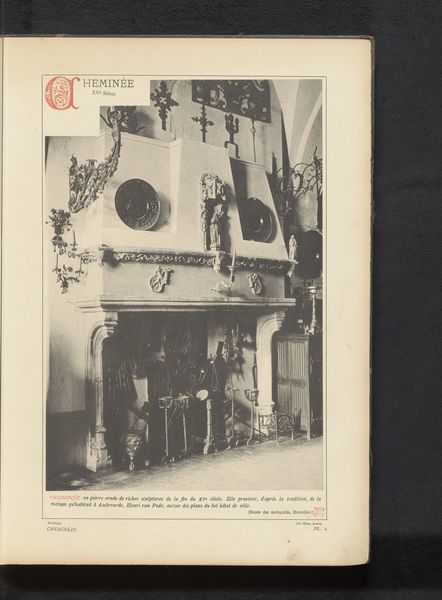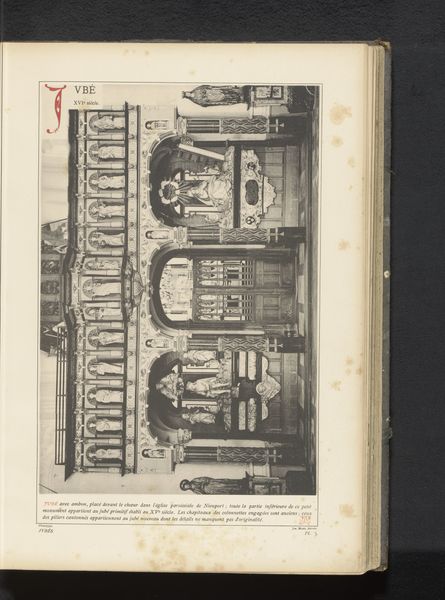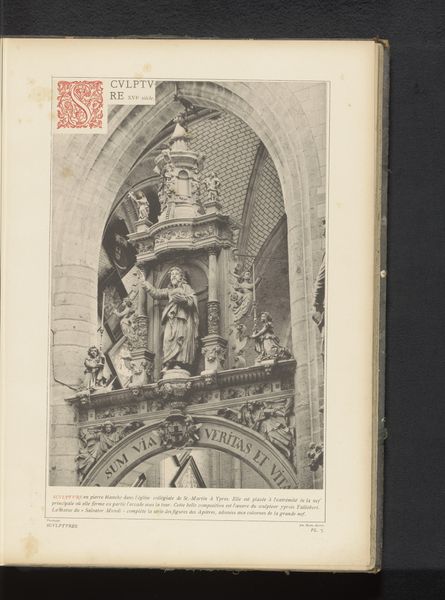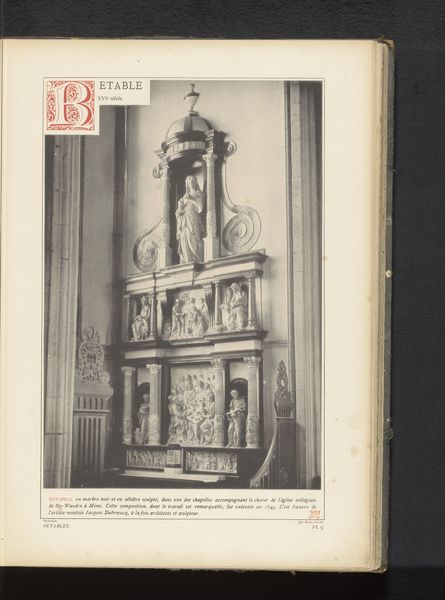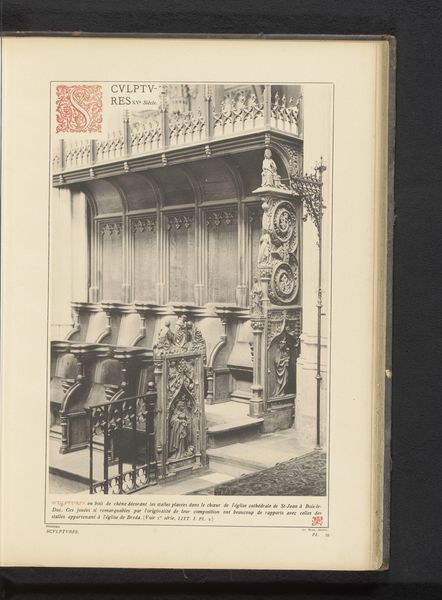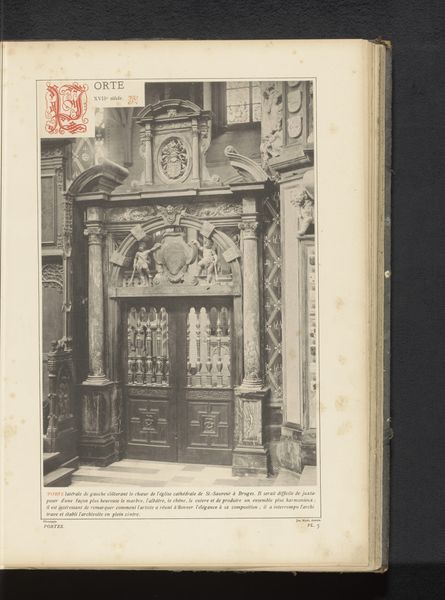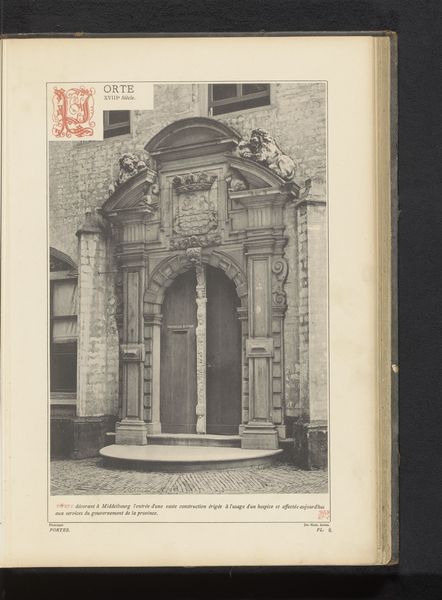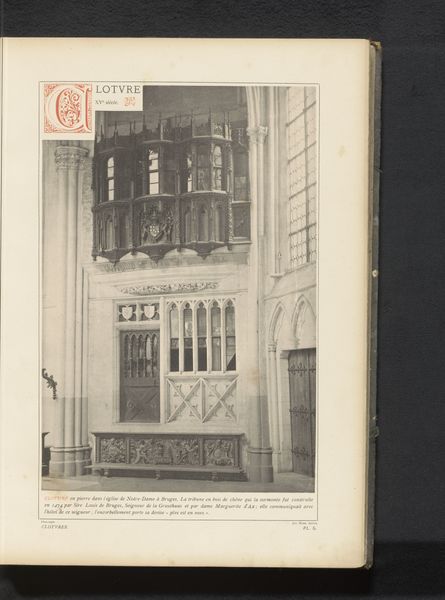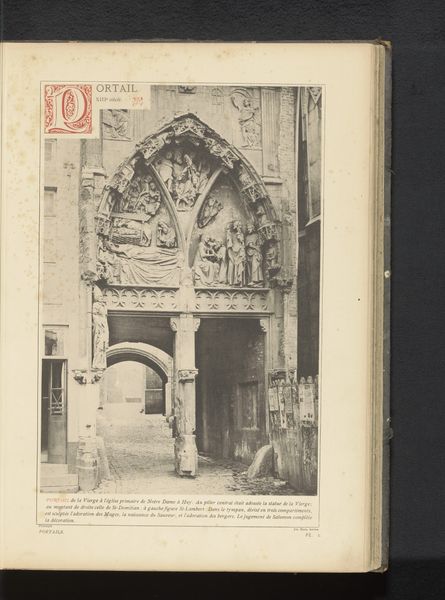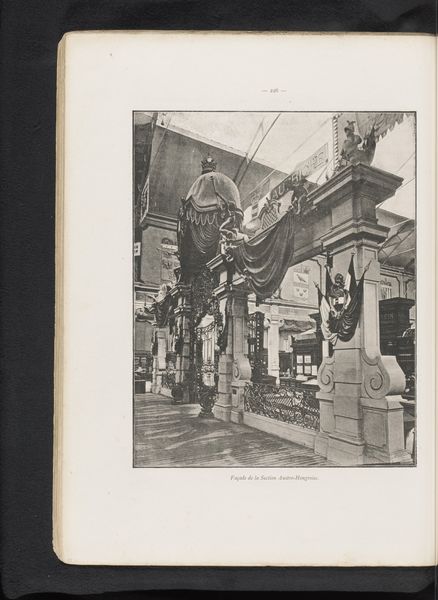
print, photography, architecture
#
portrait
# print
#
photography
#
architecture
#
realism
#
historical font
Dimensions: height 340 mm, width 234 mm
Copyright: Rijks Museum: Open Domain
Curator: This photographic print, titled "Gedecoreerde deur in het Museum van antiquiteiten te Brussel," offers a view of a decorated door from the Museum of Antiquities in Brussels, dating from before 1889. Editor: It has such a somber feel. The greyscale really brings out the weightiness of the material, makes it look impenetrable. And the figures lining the frame of the door… there’s a kind of frozen energy. Curator: The figures certainly speak to that. Notice the heraldic symbols and other ornaments – lions, crests. These were clearly meant to project power and lineage, signaling status to anyone who passed through this portal. Editor: I'm curious about the construction itself. The texture of the wood is prominent. The image’s muted tones focus the attention on how the artisan's hands shaped this solid form, and how that reflects societal values surrounding craftsmanship and perhaps even consumption. Curator: I think the details embedded in the architecture hold multiple meanings. Doors, of course, have long represented transitions, thresholds to different worlds. Considering it was placed within a museum context adds layers, suggesting access not just to rooms but to history itself. Editor: Right, and that craftsmanship implies a very specific type of labour that could not be widely available and, I imagine, that very few could access that room, as you were suggesting earlier. Were these the meeting rooms of some corporation? Curator: Yes, it does say here, "Elle donnait accés dans la salle des reunions de cette corporation." Which reinforces that concept of exclusive access, but, to go back to the heraldry, also highlights an old tension: were corporations and guilds genuinely supporting their artisans, or reinforcing restrictive power structures. Editor: Interesting, those kinds of objects ask so much, don’t they? They encourage one to consider not just their immediate visual impact but also their historical function within social contexts and the whole business behind making them… It's never really about *just* the image, it's what it is meant for. Curator: Exactly. An object so rooted in symbolism invites speculation about those earlier values while prompting questions about what kind of doors, both literal and figurative, we build now and how they might be received.
Comments
No comments
Be the first to comment and join the conversation on the ultimate creative platform.
